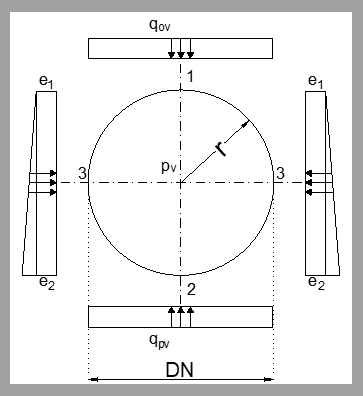While Roark has many common stress analysis formulas, using them for designing an oil pipeline is not appropriate.
External loads on a buried pipe combine with internal pressures and thermal expansion stresses resulting in complex stresses in a pipe, such stresses being limited by pipeline design codes. There are around 20 popular common pipe and pipeline design codes, not including additional national laws and regulations in almost every country that you must be familiar with to design pipe and pipeline systems. Selecting the appropriate pipeline codes to use depends on many factors, including system purpose and function, chemical plant, transportation by pipeline, power generation, class of internal product, (water, gas, liquid, oil, natural gas, drinking water), type of gas or liquid, or both, degree of hazard, pipe material selection, country, client, design pressure, design temperature, location (onshore or off). If you have enough experience to do such work, you will already know which pipeline design code(s) will apply to your situation. If you do not have the required experience, you are not even allowed to work on designing these systems until you have it. Otherwise it is usually a crime. If in doubt, you should consult your company's legal department.
--Einstein gave the same test to students every year. When asked why he would do something like that, "Because the answers had changed."



